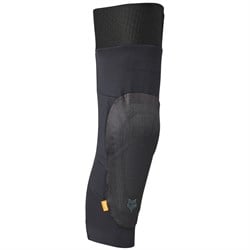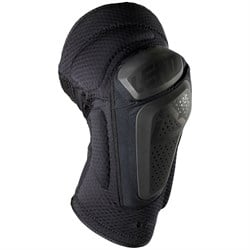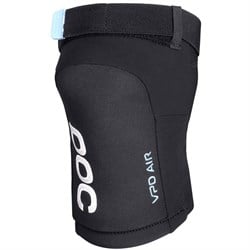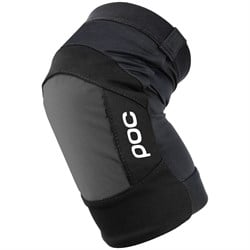How to Choose The Best Mountain Bike Knee Pads
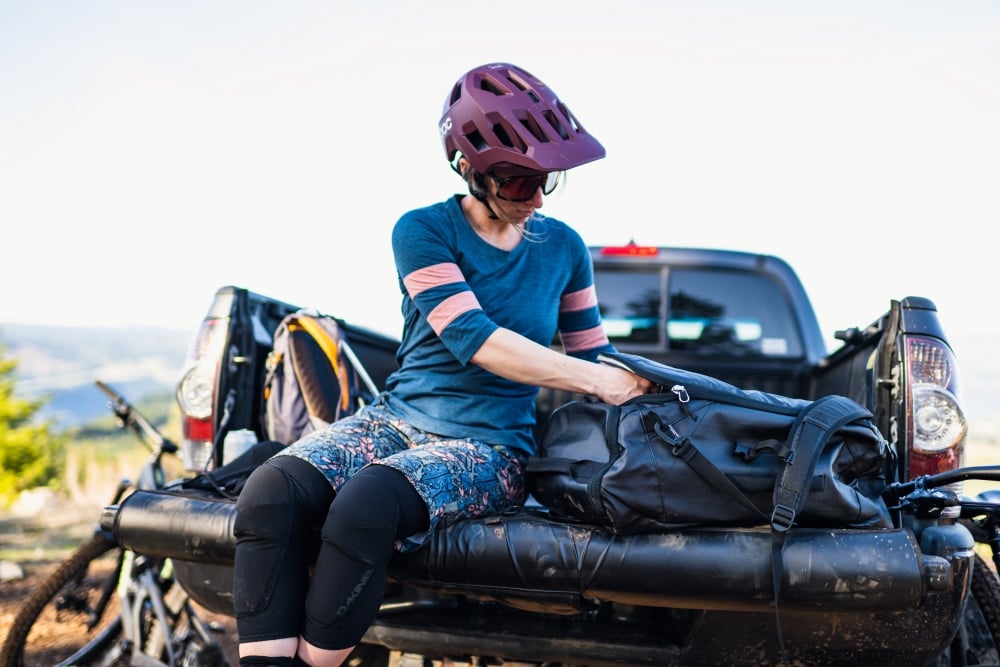
Knee Pads By Riding Type
There’s a knee pad for every kind of mountain biker, and there are a lot of different kinds of mountain bikers. Kneepads can benefit everyone from hardcore cross country racers, to shuttle-only gravity riders. So to find the best knee pad for you, it’s helpful to figure out when you’re going to be wearing it, to help determine what you need it to do. Here’s our breakdown of the most common mountain bike disciplines, and what features to look for in a knee pad for each.
Cross Country & Lightweight Mountain Bike Knee Pads
While cross country riders might not be hitting the same big jumps and drops of some other disciplines, they’re still traveling fast through rocks and trees, and the consequences of slamming a knee are just as dire. For most XC riders, a low-profile foam or D30 knee pad, without straps, is the way to go. This style of pad will be unobtrusive until they need it. They pedal well, don’t get in the way, and offer some protection. The key is finding a pad that you can wear all day, both up and downhill.
Trail Mountain Bike Knee Pads
The definition of “trail” is a broad spectrum that represents a lot of different takes on mountain biking. So it’s a good idea to establish where in that spectrum you sit. Are you going out to chase long, fast days in the saddle, relishing the ups as much as the downs? Then look for a low profile foam or D30 pad that fits well, breathes well, and doesn’t rub. If your “trail” riding falls closer to the “I don’t race enduros but they look really fun” side of the spectrum, it’s not a bad idea to go with something a little beefier. There are plenty of pads out there that split this difference, they feature a little extra padding over minimal style pads, and a plastic shell, but are still low profile, and comfortable to pedal in, without going the full hot and heavy gravity pad route.
Enduro Mountain Bike Knee Pads
While Enduro was originally just a race format, it’s evolved into a whole style of riding. If you put up with the uphills in order to savour the rowdiest downs you can pedal to, these are the pads for you. For enduro riders, protection, and ease of changing out the pads trumps everything else. It’s not really that important that the pad pedal that well, you can always just take them off and put them in your pack for longer transfers, or just push them down around your ankles for shorter pedaling stints. So look for a pad with good protection, and a hard shell. It should also have protection around the inside of the knees to protect them from frame strikes. And then make sure it’s easy to get on and off without taking your riding shoes off. That will make it much easier to change into and out of the pad between stages and transfers.
Downhill / Freeride Mountain Bike Knee Pads
Finally, for pure gravity riders, your kneepad needs are simple. It’s all about protection. If you’re riding lifts or shuttling, it’s not very important to have a pad that pedals well, instead you’re looking for something that will stay put and keep you safe through high-speed crashes. It’s all about coverage. Look for something with good shin and knee coverage and a plastic shell that fits you well.
Mountain Bike Knee Pad Fit
Fit is the most important part of buying bike kneepads. Poorly fitting pads will be uncomfortable, won’t stay in place, and won’t protect you as well. And while you may be used to just buying a “Large” in everything, kneepads have more specific fit requirements. So, before you even start shopping, it’s a good idea to measure your legs to get a feel for what size you should be looking at.
You’ll need to take two measurements, and a friend with a fabric measuring tape makes this process much easier. First, measure the diameter of your lower thigh, about three or four inches above the top of your knee. Wrap the measuring tape snugly, but not too tight around the thigh, and write down that dimension. Then do the same for your calf, an inch or two above the thickest part. These two measurements are key to finding the right size knee pads.
Every pad manufacturer uses a different sizing convention for their pads, so even though your numbers line up with a “Medium” in one brand, don’t just assume that you’re a medium in every brand. Instead check their recommended thigh and calf measurements for each size. Each kneepad brand will have its own sizing chart that corresponds to those two measurements.
With those measurements in hand, you are much more likely to find a pair of kneepads that fit. However, it’s still not a bad idea to try a few pairs on to get a feel for how snug of a fit you like.
Mountain Bike Knee Pad Size Chart
| Small | Medium | Large | Extra Large | |
| Thigh | 13" - 15" | 15" - 17" | 17" - 19" | 19" + |
| Calf | 12" - 14" | 14" - 16" | 16" - 18" | 18" + |
Mountain Bike Knee Pad Materials & Technologies
There are a few different materials knee pads can use to protect you, and they all perform differently, so it’s important to know what you’re looking for.
Engineered Foam
Most knee pads use some sort of foam, either on its own, or in conjunction with a hard shell. It’s light, it breathes well, and it provides decent protection against smaller impacts. However, without a hard shell, it doesn’t offer much protection against bigger impacts into sharp objects. So it’s best used in conjunction with a hard shell, or on lower impact areas, like inside the knees.
Plastic Shell
Most knee pads designed for gravity or enduro riding feature some sort of plastic shell over a foam padding. The shell helps protect against bigger impacts, but it doesn’t breathe as well, and can make it harder to use your knee’s full articulation. So if you’re pedaling a lot, make sure your knee pads can move well with your legs, and don’t get too sweaty.
D30 / Non-Newtonian Materials
D30 foam, and similar materials, combine the best attributes of hard shell, and soft foam knee pads. These materials stay soft and flexible while you’re pedalling, but harden instantly on impact. So you can have the ease of motion, low weight, and breathability of a foam knee pad, with much of the impact protection of a hard shell pad. These are a great compromise for many riders, but they aren’t quite as invisible feeling as a lightweight foam pad, and don’t offer quite as much protection as a full hardshell pad.
Mountain Bike Knee Pads with Straps vs Sleeves
There are two main ways that kneepads are designed to stay on: with and without straps. Kneepads with straps are usually heavier-duty, and the straps help them stay up and in place. Knee pads with straps make it possible to dial in your fit, and give you more wiggle room if you have less average dimensions. The downside is that the straps are more likely to rub and chafe when riding.
Strapless knee pads are typically just sleeves of elastic material with padding. They rely on their fabric stretch to keep them up. This makes them lighter, and helps them move with your legs better, but also means that your fit has to be perfect. Strapless knee pads can get bunched up and rub a little as well, but they generally do this less than knee pads with straps.
The biggest thing to consider when deciding how you want your pads to stay up is whether or not you’re planning on taking them off mid-ride. For XC and trail riders, who don’t want to stop at every grade change, strapless pads are the way to go. They stay comfortable all day, without moving around.
For more gravity-oriented riders, kneepads with straps are generally a good call. Many of this style of pad can be taken off and put on without removing your shoes. So you can put them in your pack on the way up, an only pad up for the way down. This keeps your knees cool, and allows you to use heavier, more protective knee pads without the discomfort on the way up.
Learn More With Our Other Bike Guides:
- How to Choose a Mountain Bike
- Mountain Bike Sizing and Fit Guide
- How to Get Started Mountain Biking
- How to Choose a Mountain Bike Wheel Size
- Mountain Bikes Suspension Basics
- How to Choose a Mountain Bike Dropper Post
- How to Choose Mountain Bike Tires
- How to Choose Mountain Bike Handlebars
- How to Choose Mountain Bike Pedals
- How to Change Bike Pedals
- How to Clean a Mountain Bike
- How to Bleed SRAM Brakes
- How to Bleed Shimano Brakes
- How to Convert to Tubeless Tires
- How to Replace Internal Cable Housing
- How to Adjust Your Rear Derailleur
- Shimano Groupset Hierarchy Explained
- SRAM Groupset Hierarchy Explained
- SRAM vs Shimano Groupsets Compared
- Women's Mountain Bike Buyer's Guide
- What to Bring Mountain Biking
- What to Wear Mountain Biking
- How to Choose MTB Knee Pads
- Gravel Bikes - How To Get Started Gravel Biking
- Electric Mountain Bike Buyer's Guide
- Classes of eBikes
- Bike Helmet Size & Fit Guide
- How to Choose Bike Shoes
- Travel Guides - Where to Mountain Bike
- Travel Guides - Where to Ride eBikes
Learn About our Favorite Bike Gear:
The Best Women's Mountain Bikes
The Best Electric Mountain Bikes
The Best Mountain Bikes for Beginners
The Best Mountain Bikes Under $3,000
The Best Trail Bikes
The Best Enduro Bikes
The Best Gravel Bikes
The Best Mountain Bike Helmets
The Best Full Face MTB Helmets
The Best Mountain Bike Knee Pads
The Best Mountain Bike Elbow Pads
The Best Mountain Bike Shorts
The Best Women's Bike Shorts
The Best Mountain Bike Pants
The Best Mountain Bike Jerseys
The Best Mountain Bike Accessories
The Best Value Mountain Bike Helmets
The Best Dropper Posts
The Best Mountain Bike Forks
The Best Mountain Bike Stems
The Best Padded Mountain Bike Shorts
The Best Mountain Bikes Handlebars
The Best Gifts for Mountain Bikers
The Best Mountain Bike Gloves
The Best Mountain Bike Socks
The Best MTB Fanny Packs
The Best Mountain Bike Backpacks
The Best Clipless Mountain Bike Shoes
The Best Flat Pedal MTB Bike Shoes
The Best Mountain Bike Tires
The Best Mountain Bike Flat Pedals
The Best Bike Racks
The Best Bike Glasses
The Best Bike Goggles
The Best Women's Mountain Bike Jerseys
The Best Tailgate Bike Pads
The Best Bike Trainers
The Best Hitch Bike Racks
The Best Clipless MTB Pedals
The Best Mountain Bikes Handlebar Bags
The Best Mountain Bike Saddles
The Best MTB Wheels
The Best MTB Grips
The Best Mountain Bike Multi Tools
The Best Mountain Bike Seat Bags
Popular Bike Searches
This is evo. We are a ski, snowboard, wake, skate, bike, surf, camp, and clothing online retailer with physical stores in Seattle, Portland, Denver, Salt Lake City, Whistler, and Snoqualmie Pass. Our goal is to provide you with great information to make both your purchase and upkeep easy.
evo also likes to travel to remote places across the globe in search of world-class powder turns, epic waves, or legendary mountain biking locations through evoTrip Adventure Travel Trips. Or, if you prefer to travel on your own, check out our ski & snowboard resort travel guides and mountain bike trail guides.
Still have questions? Please call our customer care team at 1.866.386.1590 during Customer Care Hours. They can help you find the right setup to fit your needs.
